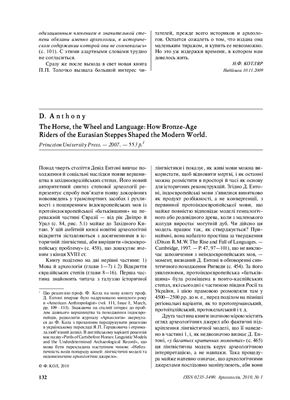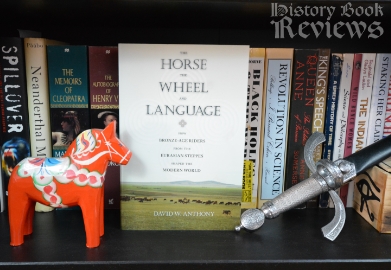

Anthony argues that we speak English not just because our parents taught it to us but because wild horses used to roam the steppes of central Eurasia, because steppedwellers invented the spoked wheel and because poetry once had real power. A professor of anthropology, Anthony brings together archaeology, linguistics, and rare knowledge of Russian scholarship and the history of climate change to recast our understanding of the formation of early human society. Wells, author of The Battle that Stopped Romeĭavid Anthony's book is a masterpiece. Along the way you will learn when and why horses were domesticated, when people first rode horseback, and when and why swift chariots changed the nature of warfare." -Peter S. "If you want to learn about the early origins of English and related languages, and of many of our familiar customs such as feasting on holidays and exchanging gifts, this book provides a lively and richly informed introduction. Christine Kenneally, International Herald Tribune Though parts of the book will be penetrable only by scholars, it lays out in intricate detail the complicated genealogy of history's most successful language. The Horse, the Wheel, and Language brings together the work of historical linguists and archaeologists, researchers who have traditionally been suspicious of each other's methods. The Horse, the Wheel, and Language solves a puzzle that has vexed scholars for two centuries-the source of the Indo-European languages and English-and recovers a magnificent and influential civilization from the past.

Anthony also describes his fascinating discovery of how the wear from bits on ancient horse teeth reveals the origins of horseback riding. He explains how they spread their traditions and gave rise to important advances in copper mining, warfare, and patron-client political institutions, thereby ushering in an era of vibrant social change. Linking prehistoric archaeological remains with the development of language, David Anthony identifies the prehistoric peoples of central Eurasia's steppe grasslands as the original speakers of Proto-Indo-European, and shows how their innovative use of the ox wagon, horseback riding, and the warrior's chariot turned the Eurasian steppes into a thriving transcontinental corridor of communication, commerce, and cultural exchange.

The Horse, the Wheel, and Language lifts the veil that has long shrouded these original Indo-European speakers, and reveals how their domestication of horses and use of the wheel spread language and transformed civilization. But who were the early speakers of this ancient mother tongue, and how did they manage to spread it around the globe? Until now their identity has remained a tantalizing mystery to linguists, archaeologists, and even Nazis seeking the roots of the Aryan race. Roughly half the world's population speaks languages derived from a shared linguistic source known as Proto-Indo-European.


 0 kommentar(er)
0 kommentar(er)
